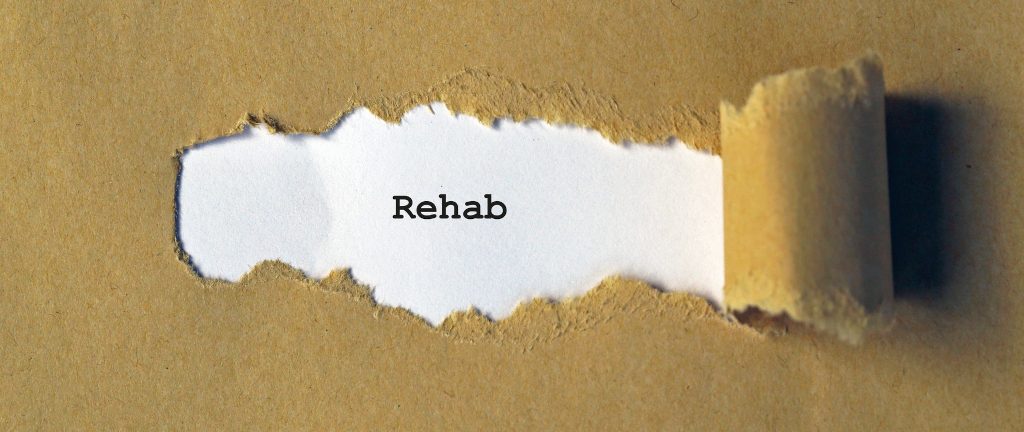If you’re looking into rehab, you’ve probably discovered that inpatient rehab is one of many options available. Is this the right one for you? What’s involved? How much does it cost?
Find answers here; learn whether or not you need rehab and, if so, whether or not inpatient rehab is the best solution for you.
Do You Need Medically Managed Detox?
If you have severe addiction, polysubstance use, medical problems or risk of seizures (especially from alcohol or benzos), unsupervised detox can be life-threatening.
Call
800-914-7089
(Sponsored)
now for a free, confidential assessment.
Understanding Inpatient Rehab: Why 24/7 Care is Essential
The path to recovery is often paved with challenges.
Support to navigate those challenges is crucial to your success. Especially during early recovery, that support may require round-the-clock care. This is what inpatient rehab provides.
With supervision available 24/7, you’re never left to your own devices. The constant support can make the difference between relapse and recovery.
Not sure if this is what you need right now? For help deciding on inpatient rehab, download the “Do I need Rehab Quiz”:
Take the quiz to see if it’s time to take the next step.
What is Inpatient Rehab?
Inpatient rehab provides addiction treatment at a live-in facility, where you receive 24/7 supervision and support. This can take place at medical facilities or inpatient rehab centers.
Staff typically include medical professionals, mental health professionals, addiction specialists, and counselors. Participants stay at the facility for the duration of the treatment program, which commonly lasts 30, 60, or 90 days.
Inpatient vs. Outpatient
| Inpatient Rehab | Outpatient Rehab |
| 24/7 supervision and support | Supervision during treatment sessions |
| Participants live at the facility for the duration of treatment | Participants live at home and visit the facility for treatment sessions |
| Higher costs cover housing, meals, & 24/7 care | Cost for outpatient rehab is typically lower than inpatient rehab |
Who Should Seek Inpatient Treatment?
Inpatient rehab offers the structured support that many people need to achieve recovery.
The criteria for inpatient rehab admission can vary by individual, but those who find themselves in the following categories should consider inpatient residential treatment:
- Lack of supportive environment at home
- Experience withdrawal symptoms
- Presence of a dual diagnosis (co-occurring mental health disorder)
- Physical health issues that could complicate recovery
- Attempts to quit before have resulted in relapse
Inpatient Rehab Benefits: Separation, Safety, and Success
Inpatient drug treatment facilities offer multiple benefits. These inpatient rehab benefits can be particularly helpful to people who find themselves in the situations listed above.
Some of the top benefits include:
- Separation: Changing old habits often requires changing one’s environment.
- Separating yourself from the people and places that encourage or trigger substance abuse can help you focus on recovery and successfully achieve sobriety long-term.
- Safety: Inpatient rehab can provide 24/7 medical supervision, which is often crucial during the initial withdrawal phase.
- Professionals can provide support to mitigate symptoms and prevent serious health complications.
- For those experiencing mental health symptoms such as depression, supervision is also helpful to prevent self-harm.
- Success: Inpatient drug treatment facilities can provide more intensive care, which is often necessary for successful recovery.
- Individuals in inpatient recovery receive constant, structured support, without the distractions of day-to-day life.
- This can make a significant difference in your success.
Am I Ready? Take the “Do I Need Rehab Quiz”
There are many reasons to consider inpatient rehab.
First, detox can expose you to significant complications when you attempt it alone. Medical supervision keeps you safe and supported during the withdrawal process. Then, follow-up treatment helps you learn skills to maintain sobriety.
But is this something you need? If you’re not sure, a substance abuse self-assessment quiz can help.
Why Take the Quiz?
It may be clear that you’re struggling, but it may not be clear whether you truly need inpatient rehab. Answering some direct questions can help you take a step back and evaluate your situation. That’s where a substance abuse self assessment quiz can help.
Download the “Do I Need Rehab Quiz” and find out if inpatient care is right for you.
How the Quiz Helps You
The quiz asks clear, direct questions to help identify signs of addiction. When you’re in the middle of a situation, it can be hard to determine how serious it is or what support you need. The quiz puts things in perspective and makes next steps clearer.
How to Use the Quiz
- Read each of the 10 questions carefully and answer honestly with Yes or No.
- Tally your responses at the end. If you answer “yes” to three or more, it’s time to seek a professional assessment.
Disclaimer
Note, this quiz is not diagnostic.
It is a guide to help you decide if it’s worth investigating inpatient rehab in your circumstances. However, it is not a medical diagnostic tool.
To obtain a medical or mental health diagnosis, contact a healthcare professional, who can administer more involved assessments to determine a diagnosis.
Admission and Financial Clarity
If you decide to attend inpatient rehab, what’s next? You may wonder how to pay for inpatient rehab, or how much does inpatient rehab cost. Here’s what you can expect.
Funding Your Recovery: Insurance, Assistance, and Cost
The cost of inpatient rehab varies greatly, due to several factors. The type of program, length of the program, and location are all factors. Insurance coverage can also vary from plan to plan.
The average cost of inpatient rehab ranges from $5,300 to $80,000.
Fortunately, insurance and other financial assistance options are available to help cover this cost. When finances are a concern, these options can make it possible to attend inpatient rehab with financial assistance.
Per the Mental Health Parity and Addiction Equity Act (MHPAEA) of 2008, insurers must provide coverage for mental health and substance use disorders in a similar fashion to other health coverage. That means insurance will cover at least part of the cost of inpatient rehab.
Costs may also be reduced through financial assistance plans.
Many facilities offer sliding scale fees, which base the cost of treatment on the individual’s income, or what they can afford. In some cases, scholarships or grants are available to defray costs.
Additionally, inpatient rehab facilities may offer flexible payment plans for patients who are not able to pay the entire cost up front.
During the admissions process, inpatient rehab facilities can work with you to confirm insurance coverage, explore financial assistance options, and determine the best way to pay for treatment.
Does Medicare Cover Inpatient Rehab?
Yes, Medicare covers inpatient rehab. Medicare substance abuse coverage falls under both Parts A (hospital care) and B (doctor’s services) of Medicare. To obtain coverage, your doctor must certify that you have a condition that requires inpatient treatment.
Understanding the Cost: What Determines the Price?
The price of inpatient rehab is based on multiple factors:
- Amenities – Luxury rehabs offer additional amenities that increase the price.
- Length of treatment – Longer programs understandably cost more.
- Location – A rehab facility in a highly desirable area, such as a beach-front location, often costs more.
- Services offered – Specialized programs, unique treatment methods, or other additional services can increase the cost of inpatient rehab.
What to Expect: The Three Phases of Inpatient Treatment
Inpatient treatment typically follows a three-phase approach: detox and stabilization, intensive treatment, and maintenance or aftercare.
But how does inpatient rehab work? Here’s a closer look at these three phases, starting with the detox admissions process.
Phase 1: Medical Detoxification and Stabilization
Most individuals entering inpatient rehab are first admitted to a detox program. This medically supervised drug or alcohol detox provides treatment and supervision as the body eliminates addictive substances.
Symptoms experienced during inpatient detox vary but may include nausea, tremors, diarrhea, cravings, chills, headache, depression, anxiety, and insomnia. These withdrawal symptoms are what happens to your body when you stop taking opioids, alcohol, or other addictive substances after becoming dependent on them.
Detox treatment mitigates these symptoms and prevents them from posing severe health risks. Patients receive 24/7 care while physical dependence on the substance is broken and the body stabilizes.
Phase 2: Treatment – Integrated Dual Diagnosis and MAT
Once the body has stabilized from the detox process, inpatient rehab treatment can begin. This typically involves individual and group therapies alongside medication assisted treatment. For best outcomes, facilities take a dual diagnosis approach to this treatment.
Dual Diagnosis: Treating the Whole Person
Often, mental health and substance use disorders occur simultaneously. For example, a person may experience an opioid use disorder and anxiety, or an alcohol use disorder and depression. This is referred to as a dual diagnosis.
Because the two disorders interact and affect one another, treatment must address both to be effective. This type of inpatient dual diagnosis treatment is common among facilities today. Because dual diagnoses are common, many programs are set up as inpatient rehab for co-occurring disorders.
Mental Health Conditions Treated
A range of mental health conditions are addressed by dual diagnosis treatment. Options include inpatient rehab for depression and inpatient rehab for anxiety.
Beyond specialized depression and addiction treatment, some of the most common mental health conditions found in dual diagnoses include:
- Trauma disorders, such as PTSD
- Anxiety disorders
- Depressive disorders
- Mood disorders
- ADHD
- Borderline personality disorder
Medication-Assisted Treatment (MAT) Protocols
Medication assisted treatment in rehab uses FDA-approved medications to address cravings and reduce the risk of relapse.
MAT in residential treatment is closely supervised by medical personnel to ensure the safety of the patient and effectiveness of the medications.
MAT Medications and Their Purpose
| Buprenorphine (Suboxone) | Helps manage opioid use disorder by reducing withdrawal symptoms |
| Methadone | Reduces opioid cravings and withdrawal and blocks the effects of opioids |
| Naltrexone (Vivitrol) | Blocks the effects of opioids; reduces alcohol cravings |
| Acamprosate | Reduces cravings and alleviates symptoms of alcohol withdrawal |
| Disulfiram | Produces unpleasant side effects when mixed with alcohol, to deter drinking |
Core Behavioral Therapies Offered
Alongside medications, inpatient rehab provides behavioral therapies to address the emotional, mental, and relational aspects of addiction. These evidence-based practices have been proven in family therapy, group therapy, and individual therapy.
Core behavioral therapies offered during inpatient rehab include:
- Cognitive Behavioral Therapy (CBT): CBT in inpatient rehab focuses on helping participants change patterns of thoughts and behaviors that have led to substance use.
- Dialectical Behavior Therapy (DBT): DBT in residential treatment helps participants learn to manage intense emotions.
Phase 3: Maintenance/Aftercare
Once individuals complete a treatment program, aftercare is provided to maintain recovery and prevent relapse. Types of aftercare support can include:
- Outpatient care
- 12 Step groups
- Continued counseling
- Employment assistance
- Housing assistance
- Sober living programs
Choosing the Right Center and Next Steps
It can be challenging to know how to choose an inpatient rehab center. Which are the best rehab facilities? Here are some questions to ask inpatient rehabs to determine if the facility is a good fit for you.
Essential Questions: How to Select Your Rehab Program
- What licensing and accreditations does the program have?
- What types of professionals make up your team/What are their credentials?
- Does your staff specialize in any particular areas?
- What is the staff-to-patient ratio?
- Do you offer medication-assisted treatment?
- Do you address co-occurring disorders?
- What amenities are offered at the facility?
- What are the costs of the program, and what financial assistance is available?
- What is included in your aftercare plan?
- How long does the admissions process take?
If, based on these answers, you decide to move forward with treatment at a specific facility, contact your insurance provider or call
800-914-7089
(Sponsored)
to verify coverage before you begin treatment.
Inpatient Rehab Frequently Asked Questions (FAQs)
How Long is Inpatient Alcohol Rehab (and Drug Rehab)?
The length of programs vary, but they typically range from 30-day inpatient rehab to 90-day inpatient rehab, with some programs offering extended long-term options.
How Much Does Inpatient Rehab Cost?
Inpatient rehab affordability varies due to many factors. Costs range from $5,300 to $80,000.
Does Medicare Cover Inpatient Rehab?
Yes, as long as your doctor certifies that the treatment is medically necessary, Medicare will cover at least part of the cost of inpatient rehab.
How Does Inpatient Rehab Work?
Inpatient rehab usually follows a three-phase process of detox/stabilization, intensive treatment, and aftercare. During detox and treatment, patients live at the facility and receive 24/7 support. Inpatient services can include medical supervision, individual and group counseling, and medication-assisted treatment.
Can You Work While in Inpatient Rehab?
In some cases, yes. Remote work options are available at some facilities.
Is Inpatient Rehab Considered Acute Care?
No. Inpatient rehab focuses more on long-term recovery and relapse prevention rather than treating an immediate life-threatening condition (acute care).
Can You Leave Inpatient Rehab Whenever You Want?
Yes, you can leave rehab at any time. However, leaving rehab AMA (against medical advice) is not recommended, as best outcomes result from completion of the program.
Is Inpatient Rehab Worth the Price?
Each person must decide this for themselves. For some, this structured setting may be the only solution that is effective for treating their addiction.
Many would argue that taking their life back is definitely worth the price. The bottom line is that each person must choose the program that works best for them.
To find treatment options near you, use this rehab program locator or call
800-914-7089
(Sponsored)
.
 Montana Nonprofit Selling Christmas Trees to Fund Addiction Recovery
Montana Nonprofit Selling Christmas Trees to Fund Addiction Recovery
 Free Addiction Recovery Apps Support Illinois Residents
Free Addiction Recovery Apps Support Illinois Residents
 Low-Cost Medicaid Addiction Treatment Expands in Missouri
Low-Cost Medicaid Addiction Treatment Expands in Missouri
 Communities Provide Free Thanksgiving Recovery Help
Communities Provide Free Thanksgiving Recovery Help


